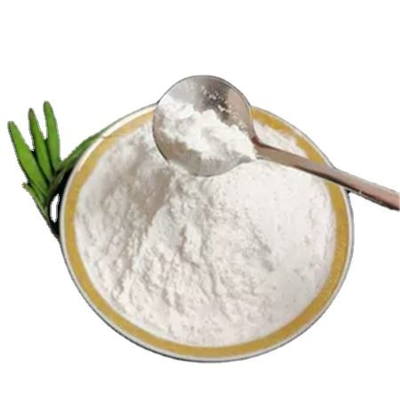-
Categories
-
Pharmaceutical Intermediates
-
Active Pharmaceutical Ingredients
-
Food Additives
- Industrial Coatings
- Agrochemicals
- Dyes and Pigments
- Surfactant
- Flavors and Fragrances
- Chemical Reagents
- Catalyst and Auxiliary
- Natural Products
- Inorganic Chemistry
-
Organic Chemistry
-
Biochemical Engineering
- Analytical Chemistry
-
Cosmetic Ingredient
- Water Treatment Chemical
-
Pharmaceutical Intermediates
Promotion
ECHEMI Mall
Wholesale
Weekly Price
Exhibition
News
-
Trade Service
However, the U.
S.
crude oil and Chicago soybean oil markets fell this week, and the increase in fertilizer prices may lead to an increase in the soybean planting area in the United States next year, restricting soybean growth .
On Friday, the Chicago Board of Trade (CBOT) January soybean futures rose 18.
75 cents, or 1.
5%, to close at 1,249.
50 cents per cat
.
The average spot price of Meiwan No.
1 yellow soybeans was 13.
1025 US dollars per pu (481.
4 US dollars per ton), up 12.
75 cents or 0.
98% from a week ago
.
On the Euronext exchange, rapeseed futures in February 2022 closed at approximately 678.
25 euros/ton, an increase of 8.
5 euros or 1.
3% from a week ago
.
The January rapeseed period of the Intercontinental Exchange (ICE) rose approximately 34.
50 Canadian dollars, or 3.
7%, to close at 959.
80 Canadian dollars/ton; the FOB spot price of Shanghe soybeans provided by the Argentine Ministry of Agriculture was 544 US dollars (including 33% export tax).
This is an increase of $6 or 1.
12% from a week ago
.
The Dalian Commodity Exchange's January 2022 soybean futures contract settlement price is 6,210 yuan/ton, up 55 yuan or 0.
9% from a week ago
.
75 cents, or 1.
5%, to close at 1,249.
50 cents per cat
.
The average spot price of Meiwan No.
1 yellow soybeans was 13.
1025 US dollars per pu (481.
4 US dollars per ton), up 12.
75 cents or 0.
98% from a week ago
.
On the Euronext exchange, rapeseed futures in February 2022 closed at approximately 678.
25 euros/ton, an increase of 8.
5 euros or 1.
3% from a week ago
.
The January rapeseed period of the Intercontinental Exchange (ICE) rose approximately 34.
50 Canadian dollars, or 3.
7%, to close at 959.
80 Canadian dollars/ton; the FOB spot price of Shanghe soybeans provided by the Argentine Ministry of Agriculture was 544 US dollars (including 33% export tax).
This is an increase of $6 or 1.
12% from a week ago
.
The Dalian Commodity Exchange's January 2022 soybean futures contract settlement price is 6,210 yuan/ton, up 55 yuan or 0.
9% from a week ago
.
On Friday, the US dollar index closed at 94.
13 points, up 0.
5% from a week ago and down 0.
1% from a month ago
.
13 points, up 0.
5% from a week ago and down 0.
1% from a month ago
.
October Chicago soybean futures fell 1.
3%, mainly due to seasonal harvest pressure
.
The weather in South America has improved compared to last year.
Soybean planting and production prospects are good, coupled with the slow pace of exports, which put pressure on soybean prices downward
.
However, soybean prices rebounded in the second half of October, because soybean prices hit a new low since the end of the year, attracting Chinese buyers to purchase
.
3%, mainly due to seasonal harvest pressure
.
The weather in South America has improved compared to last year.
Soybean planting and production prospects are good, coupled with the slow pace of exports, which put pressure on soybean prices downward
.
However, soybean prices rebounded in the second half of October, because soybean prices hit a new low since the end of the year, attracting Chinese buyers to purchase
.
Rain in the Midwest of the United States has slowed down the soybean harvest, and the Midwest will see the lowest temperature this year in the next few days.
The US Department of Agriculture's weekly national crop progress report on Monday showed that as of October 24, the US soybean harvest was 73% complete, 60% a week ago, 82% in the same period last year, and a five-year average of 70% in the same period
.
Large-scale moderate to heavy rains occurred in most areas of the corn belt this week, with rainfall ranging from 2 to 4 inches, with greater rainfall in southern Iowa and northern Missouri eastward, as well as southern Michigan and northwest Ohio
.
Analysts pointed out that it will rain almost every day this week, so farmers will not get to the fields until next week to resume harvesting
.
The weekly crop report issued by the US Department of Agriculture next week may show that the harvest has slowed down significantly, and some quality problems may also occur
.
However, U.
S.
market participants believe that U.
S.
soybean yields may be better than previously expected, and the US Department of Agriculture may increase U.
S.
soybean yields in its November 9 supply and demand report
.
.
Large-scale moderate to heavy rains occurred in most areas of the corn belt this week, with rainfall ranging from 2 to 4 inches, with greater rainfall in southern Iowa and northern Missouri eastward, as well as southern Michigan and northwest Ohio
.
Analysts pointed out that it will rain almost every day this week, so farmers will not get to the fields until next week to resume harvesting
.
The weekly crop report issued by the US Department of Agriculture next week may show that the harvest has slowed down significantly, and some quality problems may also occur
.
However, U.
S.
market participants believe that U.
S.
soybean yields may be better than previously expected, and the US Department of Agriculture may increase U.
S.
soybean yields in its November 9 supply and demand report
.
Early next week, many parts of the United States will experience the coldest weather this year, especially the plains and the Midwest
.
From November 1-3, temperatures in the northern plains will generally be below 20 degrees Fahrenheit (minus 6.
7 degrees), and frost may occur from northern Texas to the Ohio Valley
.
Except for rainfall in the eastern region, there will be very little rain in the United States in the next five days
.
In the next 6 to 10 days (November 3 to 7), temperatures in most areas except Florida are close to or below normal, and cold weather is likely to occur in the middle of the Mississippi Valley
.
Precipitation in most areas will be close to or higher than normal, but precipitation in the northern plains and northern Midwestern United States will be lower than normal
.
Meteorologist Justin Gleason in Iowa, USA, predicts that the weather in most of the Midwest in the first two weeks of November may be cold and dry
.
.
From November 1-3, temperatures in the northern plains will generally be below 20 degrees Fahrenheit (minus 6.
7 degrees), and frost may occur from northern Texas to the Ohio Valley
.
Except for rainfall in the eastern region, there will be very little rain in the United States in the next five days
.
In the next 6 to 10 days (November 3 to 7), temperatures in most areas except Florida are close to or below normal, and cold weather is likely to occur in the middle of the Mississippi Valley
.
Precipitation in most areas will be close to or higher than normal, but precipitation in the northern plains and northern Midwestern United States will be lower than normal
.
Meteorologist Justin Gleason in Iowa, USA, predicts that the weather in most of the Midwest in the first two weeks of November may be cold and dry
.
Soybean exports are generally lagging behind, but Chinese buyers are speeding up their purchases
The US Department of Agriculture’s weekly export sales report shows that for the week ending October 21, the US’s 2021/22 soybean net sales were 1.
18 million tons, a decrease of 59% from last week and a decrease of 22% from the four-week average
.
The total US soybean export sales in 2021/22 so far have been 30.
45 million tons, a year-on-year decrease of 35.
1%
.
The US sold 1.
08 million tons of soybeans to China that week, down from 1.
88 million tons in the previous week
.
So far this year, the United States has sold 16.
05 million tons of soybeans to China, a year-on-year decrease of 38.
3%
.
18 million tons, a decrease of 59% from last week and a decrease of 22% from the four-week average
.
The total US soybean export sales in 2021/22 so far have been 30.
45 million tons, a year-on-year decrease of 35.
1%
.
The US sold 1.
08 million tons of soybeans to China that week, down from 1.
88 million tons in the previous week
.
So far this year, the United States has sold 16.
05 million tons of soybeans to China, a year-on-year decrease of 38.
3%
.
As soybean prices fell during October, the lowest point since the end of last year, the US Gulf export facilities recovered from the interruption caused by Hurricane Ida, China's soybean crush profits improved, and the US soybean sales and shipments to China in October were significantly better.
In September
.
Chinese buyers are purchasing soybeans shipped from the Gulf of America in December and soybeans shipped from West America (PNW) from January to March next year
.
Nevertheless, the current pace of US soybean exports is still significantly lagging behind
.
Some analysts believe that the U.
S.
Department of Agriculture may lower the US soybean export forecast by 60 million cats in the November supply and demand report, which means that soybean stocks at the end of August next year may be close to 400 million cats, much higher than the 2.
56 at the end of August this year.
Billion po
.
In September
.
Chinese buyers are purchasing soybeans shipped from the Gulf of America in December and soybeans shipped from West America (PNW) from January to March next year
.
Nevertheless, the current pace of US soybean exports is still significantly lagging behind
.
Some analysts believe that the U.
S.
Department of Agriculture may lower the US soybean export forecast by 60 million cats in the November supply and demand report, which means that soybean stocks at the end of August next year may be close to 400 million cats, much higher than the 2.
56 at the end of August this year.
Billion po
.
Canadian canola prices continue to rise strongly
Rapeseed prices continued to climb this week, with ICE's rapeseed period breaking through the $1,000 mark, due to tight supply and good demand
.
The October report released by the Canadian Department of Agriculture (AAFC) showed that the Canadian rapeseed production in 2021/22 is expected to be 12.
78 million tons, a year-on-year decrease of 34.
4%
.
Export volume is expected to be 6.
5 million tons, a year-on-year decrease of 38.
3%; ending inventory is expected to be 500,000 tons, a year-on-year decrease of 71.
7%
.
Data from the Canadian Grain Council showed that as of the week of October 24, Canadian rapeseed exports were 274,600 tons, an increase of 48.
1% from a week ago
.
However, the export volume of rapeseed so far this year is 1,443,800 tons, a decrease of 47.
7% year-on-year
.
.
The October report released by the Canadian Department of Agriculture (AAFC) showed that the Canadian rapeseed production in 2021/22 is expected to be 12.
78 million tons, a year-on-year decrease of 34.
4%
.
Export volume is expected to be 6.
5 million tons, a year-on-year decrease of 38.
3%; ending inventory is expected to be 500,000 tons, a year-on-year decrease of 71.
7%
.
Data from the Canadian Grain Council showed that as of the week of October 24, Canadian rapeseed exports were 274,600 tons, an increase of 48.
1% from a week ago
.
However, the export volume of rapeseed so far this year is 1,443,800 tons, a decrease of 47.
7% year-on-year
.
Rain in South America helps soybean planting
In Brazil, recent rainfall in the main agricultural production areas in Brazil has improved soil moisture, which will help corn and soybean planting in the 2021/22 season
.
According to data from the Brazilian National Commodity Supply Company (CONAB), as of October 23, the soybean planting progress of the main soybean-producing states in Brazil for the year 201/22 was 36.
8%, which was higher than 20.
5% in the same period last year
.
The soybean planting area in these main producing states is equivalent to 97% of the national area
.
It will continue to rain in soybean producing areas for some time to come, which is conducive to the initial growth of soybean crops
.
Brazil’s National Meteorological Service (IMNET) said that in the central and western regions, rainfall may be concentrated in the east of Mato Grosso Sul from October 26 to November, with rainfall between 50 mm and 100 mm
.
.
According to data from the Brazilian National Commodity Supply Company (CONAB), as of October 23, the soybean planting progress of the main soybean-producing states in Brazil for the year 201/22 was 36.
8%, which was higher than 20.
5% in the same period last year
.
The soybean planting area in these main producing states is equivalent to 97% of the national area
.
It will continue to rain in soybean producing areas for some time to come, which is conducive to the initial growth of soybean crops
.
Brazil’s National Meteorological Service (IMNET) said that in the central and western regions, rainfall may be concentrated in the east of Mato Grosso Sul from October 26 to November, with rainfall between 50 mm and 100 mm
.
In Argentina, the Buenos Aires Grain Exchange stated that the recent rains in agricultural production areas have facilitated the advancement of soybean planting
.
However, weather forecasts show that the weather will become dry for some time in the future, possibly due to the influence of the La Niña phenomenon
.
The exchange estimates that the soybean planting area in 2021/22 will be 16.
5 million hectares, the lowest in 15 years, because farmers are more willing to plant corn
.
.
However, weather forecasts show that the weather will become dry for some time in the future, possibly due to the influence of the La Niña phenomenon
.
The exchange estimates that the soybean planting area in 2021/22 will be 16.
5 million hectares, the lowest in 15 years, because farmers are more willing to plant corn
.







